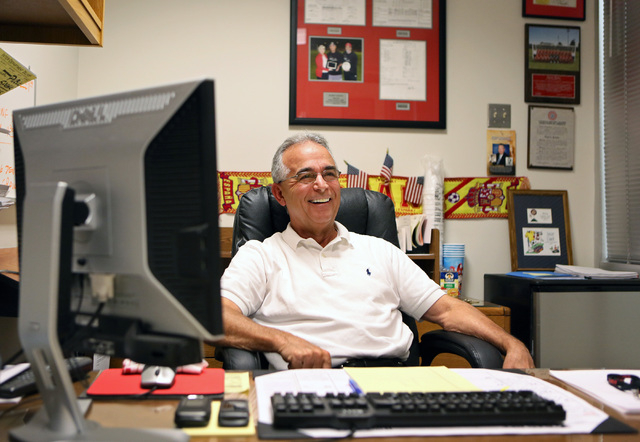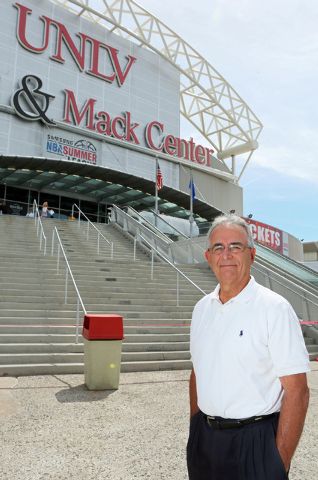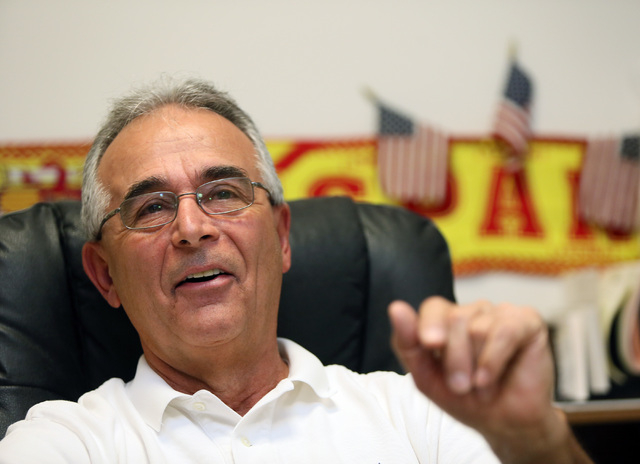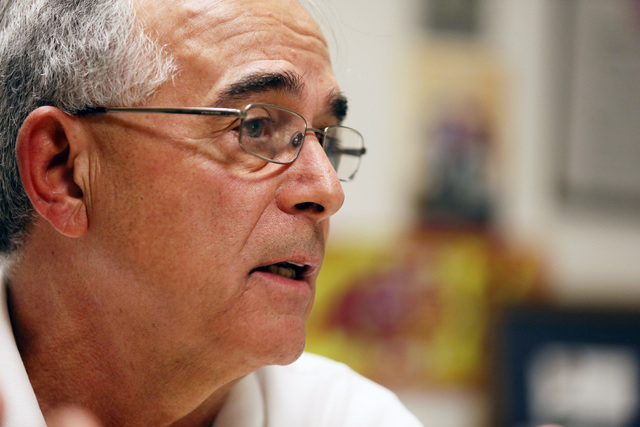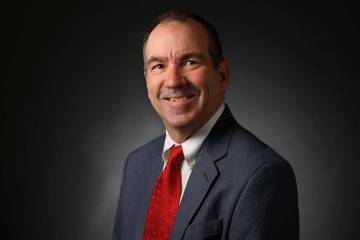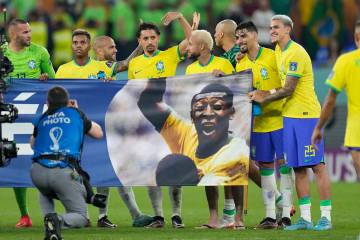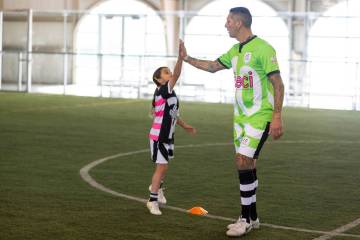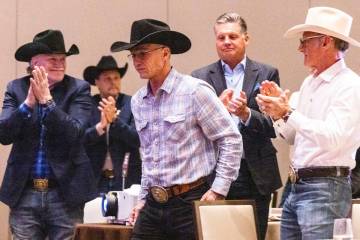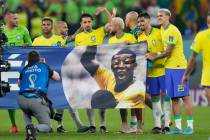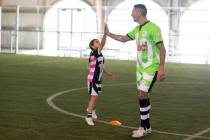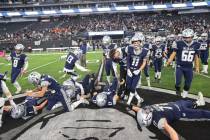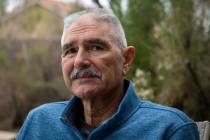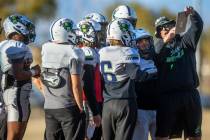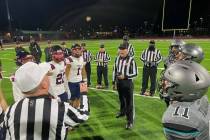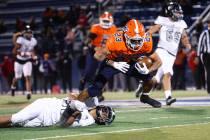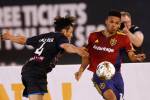U.S. may not win Cup, but at least we know who players are
Much has changed since former UNLV soccer coach Barry Barto wore the armband as captain of the U.S. men’s national soccer team. For starters, when he played for the national side from 1972 through 1975, the world’s best soccer players didn’t take chunks out of opposing players with their teeth.
Also, there’s a lot of interest in the U.S. men’s national team today. Incredible interest. More than 24.7 million domestic TV viewers watched the Americans battle Portugal to a 2-2 draw Sunday in the group stage of the World Cup.
In the group stage!
That was more Americans, on average, than watched last year’s World Series. More, on average, than watched the recently concluded NBA Finals.
Did you see the crowd that gathered to watch the soccer game on big screens near Chicago’s Grant Park? What a wild scene. There were so many people, the authorities couldn’t handle it. It was like 1968 again, except nobody was throwing rocks at Mayor Daley’s police force.
Ole! Ole! Ole!
This is crazy.
LeBron James lets it out that he doesn’t wasn’t to play basketball for Miami any longer, and all people want to talk about is whether Jozy Altidore be able to play against Germany today with his bum hamstring.
People know who Jozy Altidore is. Same with Clint Dempsey, and Tim Howard, and Michael Bradley, et al, and why the heck didn’t Bradley just kick the ball into Row Z, as the British soccer announcers say, at the end against Portugal instead of letting that Ronaldo dude have it?
Barry Barto said when he played soccer for the national team, nobody knew who the U.S. players were. Including the U.S. players.
“I think the first game I played in was in Newfoundland against Canada,” said Barto, who guided the Rebels to a school-record 221 victories and five NCAA Tournament appearances and is now an assistant athletic director.
“So here’s what happens: We didn’t have a full side. I think we had 11 or 12 players. The balance of the team was from St. Louis. They didn’t show up until halftime, because of their scheduling, or the plane was late. So we’re losing 2-0 and they show up at halftime and we wind up losing 3-2.”
That’s just how it was in those days, Barto said.
“The coaches changed every other game. I must have had six or seven coaches. There wasn’t a true training center. There wasn’t a true organization from the standpoint of player identification. Many played in the league (NASL), many played in the amateur leagues in New York or Chicago or San Francisco. The team was always changing. We really never practiced together.
“We played a game in Mexico City, in Azteca (Stadium). Werner Roth — he and I played together a lot, he was captain of the (New York) Cosmos — were playing side by side. And just before kickoff, he says to me ‘Who’s No. 8, playing right midfield?’
“And that was how it was put together.”
Barto earned 16 caps for the national team. He got to play soccer around the world. In Tel Aviv, during the Arab-Israeli War and the battle for the Golan Heights, he remembers going to the movies to watch “Day of the Jackal.” The guy next to him had a carbine strapped to his shoulder. The Americans could have used him to hold the midfield.
The U.S. did not qualify for the World Cup when Barto was playing. It did not come close. It’s hard to qualify for the World Cup when some of your best players can’t make it to the qualifiers because they can’t get off work.
It would be another 20 years before it would change.
It really didn’t change until the 1994 World Cup, played on American soil. So as not to embarrass ourselves by losing to Haiti or somebody like that, organizational changes were made. And now, 20 years after the initial commitment, we’re even poaching players from Germany and elsewhere, like the other powerful soccer-playing nations do.
And now we’re competing with them for a spot in the knockout round at the World Cup.
“The entire soccer world has changed from that time,” said Barto, who played for Montreal, Philadelphia and Fort Lauderdale in the NASL, and played against the indomitable Pele, and has an autographed picture from Pele hanging on the wall in his office from when they both worked for the Umbro company.
So you see the U.S. beat a good side such as Ghana, and dominate Portugal until Michael Bradley refused to boot the ball into Row Z. You see Major League Soccer doing well, adding franchises. Guys can make a decent wage in the domestic league now, so the best center backs don’t have to try out for the Detroit Lions anymore.
Is this the perfect storm, or at least a storm of enough magnitude to carry the U.S. all the way to the top in international soccer, or at least close to it?
The last question I asked Barry Barto, a svelte and youthful-looking 64, was would we see the U.S. men’s national team win the World Cup during our lifetimes. He thought about it for a minute. He smiled a wry smile.
“Depends of how long we live,” he said.
Las Vegas Review-Journal sports columnist Ron Kantowski can be reached at rkantowski@reviewjournal.com or 702-383-0352. Follow him on Twitter: @ronkantowski.



